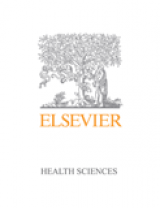Use this atlas to interpret radiographic images and make accurate diagnoses! Hundreds of high-quality images clearly demonstrate normal avian anatomic and radiographic features in a wide variety of species so that you can recognize abnormal features. This book includes detailed directions for patient positioning along with radiographic exposure guidelines, ensuring that you obtain the highest quality diagnostic images.
Key Features
- Complete directions for positioning during radiographic examination help you take high-quality radiographs for accurate interpretation.
- Radiographic exposure guidelines are provided for each species and radiographic view, so you can determine optimal settings and technique.
- Line drawings are superimposed on radiographic images, so you can identify anatomic structures accurately.
- Alternative imaging studies — including CT, MRI, ultrasound, GI, urogram, and other contrast media studies —allow advanced diagnostic interpretation.
- A companion CD includes all of the radiographic images in the book for digital monitor viewing.
Author Information
By Sam Silverman, DVM, PhD, DACVR, Clinical Professor, Department of Surgical and Radiological Sciences, University of California - Davis and Lisa Tell, DVM, PhD, DABVP(Avian), DACZM, Associate Professor, Department of Medicine and Epidemiology, University of California - Davis
1. Radiology Equipment and Positioning Techniques
2. Anatomic Art
3. Budgerigar (Melopsittacus undulates)
4. Peach-Faced Lovebird (Agapornis roseicollis)
5. Cockatiel (Nymphicus hollandicus)
6. Sun Conure (Aratinga solstitialis)
7. Senegal Parrot (Poicephalus senegalus)
8. African Grey Parrot (Psittacus erithacus erithacus)
9. Orange-Winged Amazon Parrot (Amazona amazonica)
10. Blue and Gold Macaw (Ara ararauna)
11. Goffin Cockatoo (Cacatua (Licmetis) goffini)
12. Sulphur-Crested Cockatoo (Cacatua galerita)
13. Umbrella Cockatoo (Cacatua (Cacatua) alba)
14. Moluccan Cockatoo (Cacatua moluccensis)
15. Pigeon (Columba livia)
16. Mallard Duck (Anas platyrhynchos)
17. Red Tailed Hawk (Buteo jamaicensis)
18. Great Horned Owl (Bubo virginianus)
"This is a well-written, thoroughly referenced, and highly practical book for rehabilitation clinicians who work with patients with spinal cord injury. While there are other books that train rehabilitation therapists about spinal cord injury management, this book provides somewhat more of an evidence base to support the practices."
- Doody




